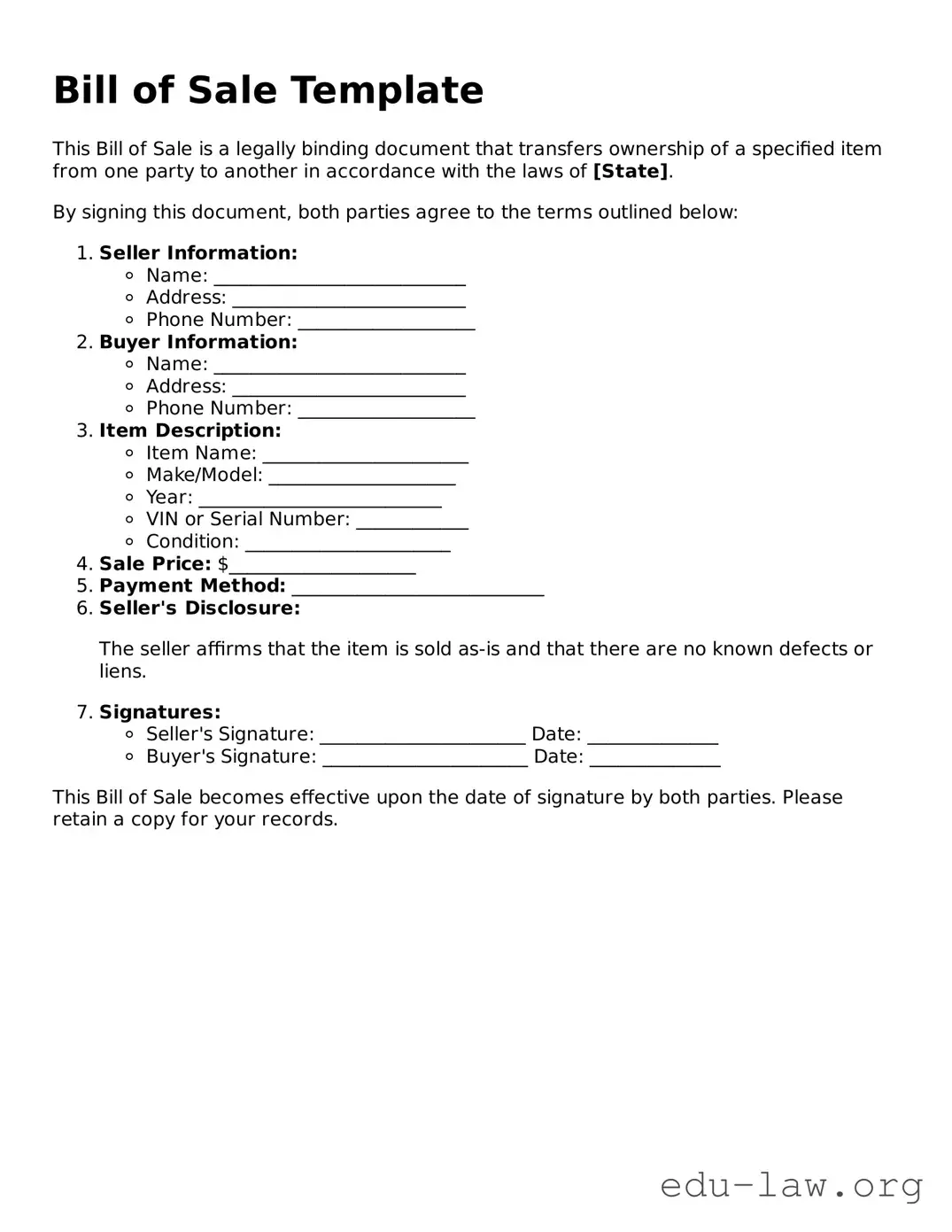What is a Bill of Sale?
A Bill of Sale is a legal document that serves as proof of the transfer of ownership of an item from one party to another. This document is commonly used in the sale of personal property, such as vehicles, boats, or other valuable items. It outlines essential details about the transaction, including the item being sold, the sale price, and the identities of both the buyer and seller.
Why do I need a Bill of Sale?
A Bill of Sale protects both the buyer and seller. For the seller, it provides evidence that the item has been sold and protects against future liability claims. For the buyer, it serves as proof of ownership, which can be crucial for registration or resale purposes. Having a well-drafted Bill of Sale can help prevent disputes by clearly outlining the terms of the transaction.
What information should be included in a Bill of Sale?
Your Bill of Sale should include specific critical details. These include the full names and addresses of both the buyer and seller, a description of the item being sold (such as make, model, and serial number), the sale price, and the date of the transaction. Additional clauses regarding warranties, liabilities, and condition of the item can also be beneficial.
Do I need to have the Bill of Sale notarized?
Not all transactions require notarization, but having the Bill of Sale notarized can add an extra layer of security and credibility to your document. Notarization can help prevent fraud and provide a clear record of the transaction. It's especially advisable for high-value items or when the buyer and seller are not well-acquainted.
Is a Bill of Sale legally binding?
Yes, a properly completed and signed Bill of Sale is considered a legally binding contract. This means that both parties are obliged to adhere to its terms. If one party fails to uphold their end of the agreement, the other party may have legal grounds to pursue action in court. However, it’s essential that the document is clear and includes all necessary details to avoid ambiguity.
Can a Bill of Sale be used for any type of sale?
While a Bill of Sale is commonly used for personal property transactions, it can also be utilized in other contexts, such as for vehicles, boats, recreational vehicles, and even some business assets. However, it's important to note that specific assets, like real estate, often require more elaborate forms of documentation.
Where can I get a Bill of Sale form?
You can find Bill of Sale templates online, at legal supply stores, or through local government offices. Many websites offer free or paid templates customizable to your needs. It's advisable to choose a template that is specific to your state, as laws and requirements may vary. Always ensure that the document complies with your state's regulations for a smooth transaction.
